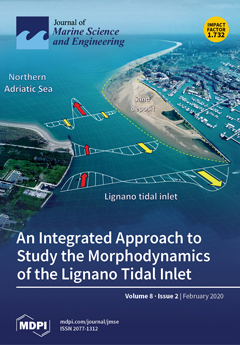This study applies three different methods to assess the flood risk and damage from the strongest high-pressure cold front (locally known as ‘
Norte’) event in terms of the residual tide from 30 years (1979–2008) of data for Progreso, Yucatan. The most
[...] Read more.
This study applies three different methods to assess the flood risk and damage from the strongest high-pressure cold front (locally known as ‘
Norte’) event in terms of the residual tide from 30 years (1979–2008) of data for Progreso, Yucatan. The most important difference between the three methods is the estimation of flood vulnerability for Progreso. The first method, proposed by Mexico’s National Center for the Prevention of Disasters (CENAPRED) and used by the Mexican government is based mostly on economic asset (household goods) values and flood impacts. The second (CENAPREDv2) and third (FRI) methods are proposals for assessing risk that include 17 socioeconomic indicators. The former includes economic asset values, as is the case for CENAPRED, while the latter does not. The main results of this study show that the modeled ‘
Norte’ event flooded 25% of Progreso’s city blocks, with an estimated economic flood risk of $USD 16,266 (CENAPRED) and $USD 223,779 (CENAPREDv2), and flood damage of $USD 48,848 and $USD 671,918, respectively. When calculating flood risk (FRI) and flood damage (FRI_FD) without monetary terms, the risk categories along the back-barrier behind Progreso varied spatially from ‘very low’ to ‘high’, while areas along the coastal side presented a ‘low’ and ‘very low’ risk. These categories increased for the flood damage because the exceedance probability of the flood was not considered as it was for flood risk in the three methodologies. Therefore, flood damage provides the losses caused by a given flood event without considering how probable that loss may be. In conclusion, this study proposes that the selection of the applied method depends on the main objectives and specific interests when assessing flood risk. For instance, if economic damage is the main concern, then the CENAPRED method should be used as it identifies where the larger economic impacts could occur; when a socioeconomic approach is needed then the FRI should be applied, but if both economic damage and socioeconomic aspects are needed, the CENAPREDv2 is recommended. Besides considering economic aspects, the FRI method also includes social variables that can help to map the most vulnerable population in terms of mobility, education, communication access and others. Therefore, the proposed FRI method is very relevant for disaster risk managers and other stakeholders interested in disaster risk reduction.
Full article





